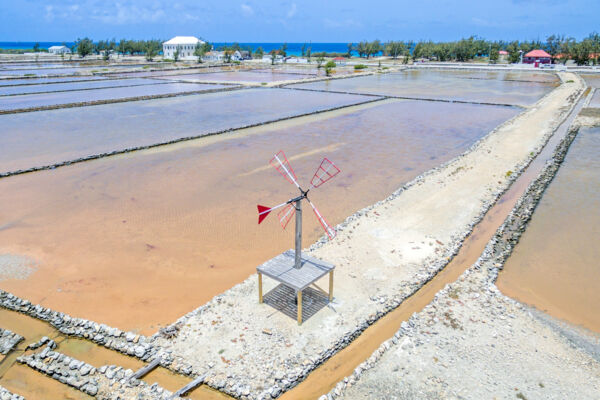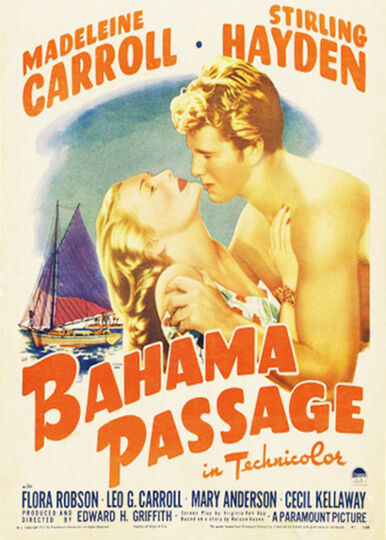History and Overview of Salt Cay
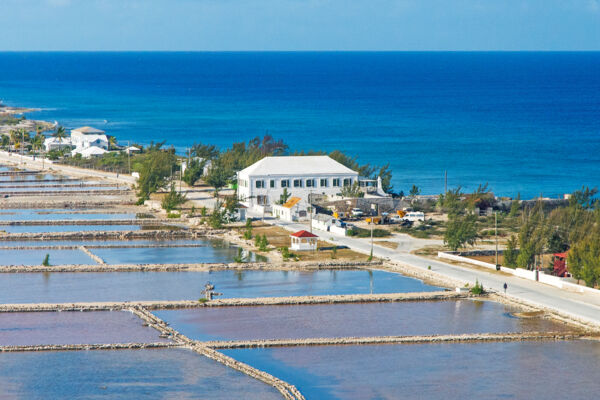
Salt Cay is a small inhabited island in the southeast Turks and Caicos, with a total landmass of 2.6 square miles (6.7 km²). Much of the cay consists of marine ponds and low-elevation dry tropical brushlands. Today, the island’s economy is primarily driven by a limited tourism and scuba diving industry.
Salt Cay is the second largest island in the Turks Islands group, with Grand Turk being the largest. Salt Cay’s name is derived from the island’s long history with sea salt production.
The primary settlement on Salt Cay is Balfour Town, where the main port of Deane's Dock is located. Two small residential areas, North District and South District, support the majority of homes on the island.
History and the Salt Industry
| Quick Facts | |
| Population | 108 (2012 Census) |
| Area | 2.6 mi² (6.7 km²) |
| Airport | Salt Cay Airport |
| Best Beach | North Bay |
| Highest Point | 57 feet (17 m) - Taylor Hill |
| ISO 3166 | TC-ST (unofficial) |
Around 1673, British Colonials from Bermuda saw the potential of the shallow and landlocked ponds on many of the islands in the Turks and Caicos. At the time, salt was a valuable essential used for food preservation, and hence commanded a high price.
Although the early visitors simply raked the naturally occurring salt, it became obvious that production could be increased and the complex system of divided ponds, gates, channels, and pumps was born.
These original settlers founded Balfour Town, the main settlement on the island.
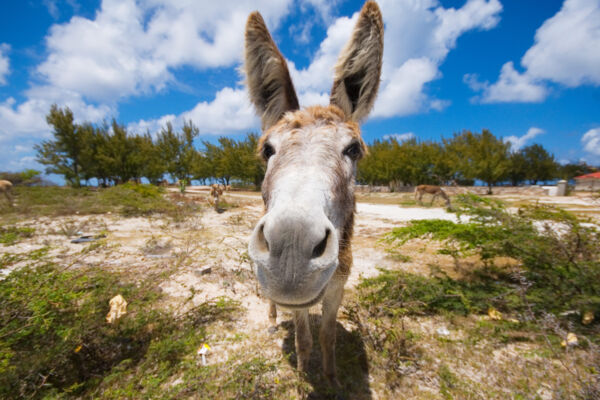
Salt production continued and was the main source of income for the economy of the island for about 250 years. Several factors led to the industry’s demise in the early 1930s, yet the inefficiencies of the small scale of production was the primary cause of the industry’s end.
The United States was the main destination of the country’s salt exports, even going back as far as the American Revolutionary War, when, despite the fact that Bermuda and the Turks and Caicos Islands were under the jurisdiction of Britain, salt was shipped to George Washington’s forces.
Salt Cay saw a population peak of around 700 people in the 1700s and 1800s. This number has generally been declining to this day. Many residents moved on to other islands in the Turks and Caicos, or the Bahamas.
Bahama Passage
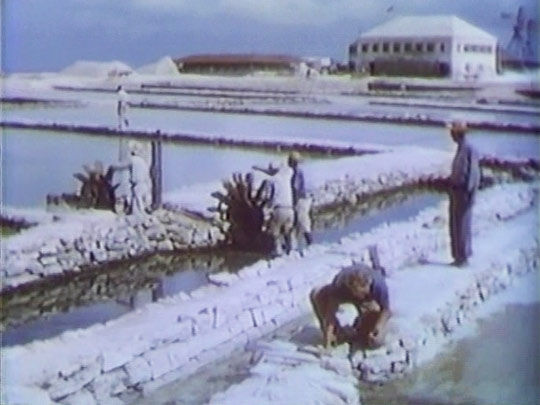
During World War II in 1941, a Hollywood film titled Bahama Passage was shot almost entirely on Salt Cay, and it starred Madeleine Carroll (known for her role in 39 Steps) and Stirling Hayden (known for roles in Dr. Strangelove and The Godfather).
This movie was filmed during the last era of salt production, and the film gives a last glimpse at the operating salt industry. The windmills, gates, and locks were still functioning, and piles of salt ready for export stood.
Several other films have been shot in the Turks and Caicos, including several low-budget projects and the BBC’s Turks and Caicos drama, yet Bahama Passage was a premier feature film shot in Technicolor, when the technology was quite new and expensive.
The salt industry on the island was still in full operation in the 1940s when the movie was shot, however, the local industry began to be affected by the inefficiencies of the small scale of production and the decline continued.
The features that are prominent in Bahamas Passage, such as the Harriett White House, the salinas, and colonial buildings still stand and are easily recognizable today.
Salt Cay Today
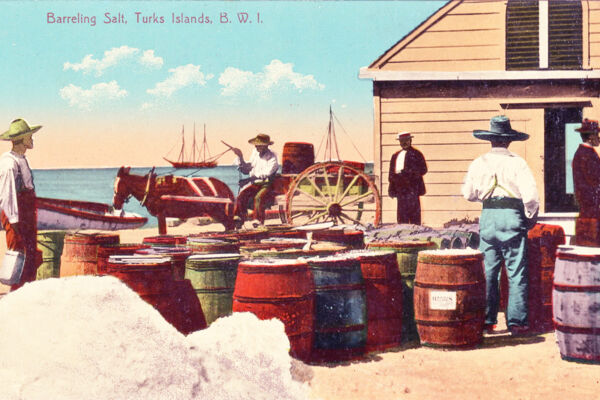
Today, Salt Cay is truly an example of an ‘island time forgot’. Donkeys, the ancestors of which used to pull carts, now roam freely all over the island. There are no paved roads and very few cars. Remnants of the salt salinas and windmill foundations remain. The island is currently home to about 100 people, many of whom are elderly.
Much of the old colonial architecture remains around Balfour Town and the Deane's Dock area, including the Harriott White House, which is one of the island’s icons.
Salt Cay is an excellent location for both diving and whale watching. Recent campaigns have succeeded in getting Salt Cay nominated to be a UNESCO World Heritage Site, which would make it the only such site in the Turks and Caicos Islands.

